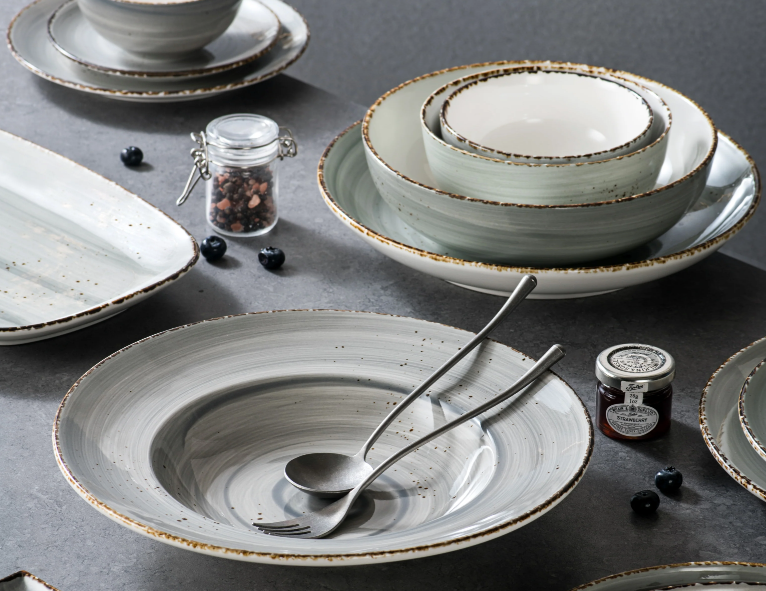Why a Serving Platter Set With Square and Oval Pieces Is Ideal for Hosting
- Terim Sheilth
- Aug 28
- 4 min read

Entertaining at home or preparing for a professional event isn't just about what's on the menu; it's about how it's presented. A beautifully arranged dish can influence perception long before the first bite. That's where the proper serving platter set makes all the difference. But not just any set will do.
One that combines square serving platters with a large oval serving platter offers a level of versatility and elegance that hosts, caterers, and restaurateurs truly appreciate. This isn't about trend-following; it's about practical design and aesthetic balance that transforms an ordinary table into a curated dining experience. Here's what makes this combination so effective for gatherings, big or small.
Who Benefits From a Mixed-Shape Serving Platter Set?
It's easy to think these pieces are only for lavish dinners, but the audience is far broader.
Event planners use them to create symmetry across buffet spreads.
Restaurant owners appreciate their stackability and multi-use potential.
Home entertainers understand their ability to seamlessly shift from a casual brunch to a formal dinner.
By offering both shapes, a serving platter set serves professionals and passionate home hosts equally well. Square pieces excel at structured presentations, while an oval format lends a softer, flowing look to the arrangement.
What Makes This Combination Practical?
A good table setup needs variety without clutter. The mix of geometric and organic forms in a single set achieves that balance.
Square serving platters work perfectly for portioned appetizers, sushi rolls, or structured desserts. Their clean lines allow for neat alignment, ideal for small bites.
The large oval serving platter, on the other hand, is the go-to choice for centerpiece dishes, such as roast meats, whole fish, or abundant fruit displays. Its elongated design accommodates large portions while maintaining an elegant profile.
Unlike sets dominated by a single shape, this pairing introduces visual rhythm without overwhelming the table. Every platter has a clear role, reducing last-minute stress when plating.
When Does Shape Matter Most?
Shape becomes crucial during high-impact moments, such as the first reveal. Guests notice the presentation before the flavors. During weddings, corporate lunches, or tasting menus, an incorrect layout can disrupt the event's flow and overall experience.
For buffets, a large oval serving platter draws attention to the main course, anchoring the setup.
For passed hors d'oeuvres, square serving platters keep things organized and easy to handle.
Timing is also crucial in service. Switching dishes between courses becomes smoother when the set offers options for both compact and expansive arrangements. This isn't just design; it's operational efficiency.
Where Does a Mixed-Shape Set Fit Best?
The beauty of this combination lies in adaptability. It moves from the intimacy of a home table to the scale of a hotel banquet without compromise. In professional kitchens, the modular nature of square platters optimizes storage while maintaining a visually appealing presentation on a dining table.
For catering events, the oval piece becomes the hero for signature dishes, while squares handle everything from sliders to petit fours.
Even in small apartments, where counter space is limited, these sets work because the pieces stack neatly and serve double duty as both prep and serving areas, as well as display spaces.
Why Choose Both Instead of One Shape?
A single shape might look uniform, but it can feel repetitive. Combining square and oval forms creates visual tension, the good kind. It mirrors principles used in interior design: pairing structured lines with softer curves to keep the eye engaged. From a practical standpoint, dishes don't all share the same geometry. Try placing a whole roast on a square tray; the result feels cramped.
Put delicate macarons on an oval dish, and they slide around awkwardly. A serving platter set that blends both solves these problems gracefully. Brands like Palate & Plate understand this balance, curating collections that seamlessly merge durability with design to meet commercial-grade needs. Their approach reflects a core principle: the vessel should complement the culinary vision, not compete with it.
How Do You Use Them Effectively?
A mixed set invites creativity, but a few strategies keep it functional:
Plan by course: Reserve the large oval serving platter for entrées or as a shared centerpiece.
Group by style: Use square serving platters for items that need structure or symmetry.
Layer heights: Elevate one shape slightly above the other to create dimension on the table.
Balance quantity: Avoid overloading either shape. Negative space matters for presentation.
With these guidelines, the set becomes more than storage; it turns into a storytelling tool for food.
The Bottom Line
A serving platter set that includes both square serving platters and a large oval serving platter isn't just an aesthetic choice; it's a functional one. It adapts to multiple cuisines, layouts, and service styles, which makes it indispensable for anyone serious about presentation. So why does this matter beyond the dinner table? Because in a world where dining is as much about experience as taste, the right tools shape perception.
Whether setting the stage for a client dinner or hosting friends at home, presentation signals care and attention to detail. For those looking to refine their service style, it's worth considering how shapes work in conjunction with one another. Start with a thoughtfully designed set, learn its strengths, and let it guide your plating choices. The result? A table that doesn't just feed guests, it impresses them.



Comments